Gun Test
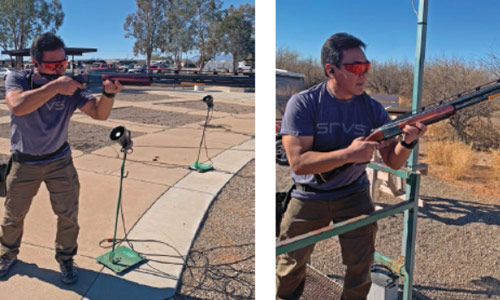
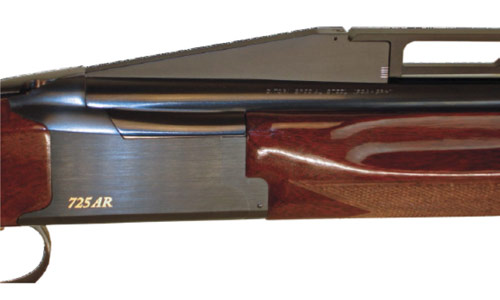
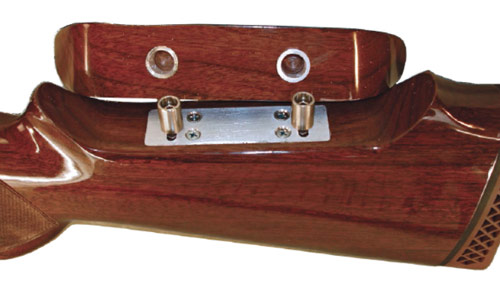

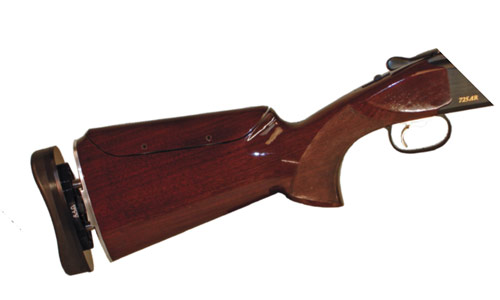
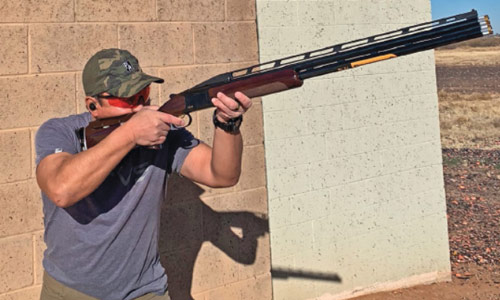
Photos courtesy of Monsoor’s Sport Shop (except where noted)
Monsoor’s Sport Shop is a family-owned business located in La Crosse, Wisconsin. While they offer many different types of new and used firearms for sale, their selection of shotguns for the competitive clay target shooter is one of the best in the country. By listening to their customers, they have identified some feature gaps that competitive clay target shooters are asking for. After watching many of their customers purchase a clay target shotgun and then have a gunsmith modify it with aftermarket features, Roger Wendling reached out to Browning Arms in Morgan, Utah, to produce some of their top-selling clay target shotguns with the features that shooters want exclusively for Monsoor’s Sport Shop. The Browning 725 (Adjustable Rib) AR is produced by Browning exclusively for Monsoor’s Sport Shop by incorporating an adjustable rib into their top-selling 725 over/under target shotgun.
Roger asked Browning to produce the 725 AR in both 32″ and 30″. So, for this gun test I was provided with both the 30″ model and the 32″ model. As the name indicates, the Browning 725 AR has an adjustable rib which can be adjusted at both the muzzle and at the receiver. To change the height of the rib at muzzle end, a small pin is removed and then replaced after the height adjustment has been made. As such, the rib at the muzzle end has two positions: low and high. To change the height of the rib at receiver end, an Allen wrench is used to turn the screw atop the rib which will raise and lower the rib. With this system, the height of the rib at the receiver end can be adjusted from low to high and anywhere in between. Lines are marked on the non-moving portion of the rib to indicate adjustment height.
The Browning 725 AR shotguns provided for this review had three modifications which were added by Monsoor’s Sport Shop: a 4-way adjustable comb, the RAD-2a recoil-reduction system and a Kick-eez medium-sized recoil pad. Since these items were added to the Browning 725 AR shotguns by Monsoor’s Sport Shop, shooters can purchase a Browning 725 AR without these modifications. If a shooter purchases the Browning 725 AR without these modifications, then the stock they will get will be a parallel-comb stock, which is not adjustable and has a drop at comb of 1 5/8″ and drop at heel of 2 1/8″.
Both shotguns sent to me for this review were right-handed. As such, they included a palm swell for the shooter’s right hand, which is standard on the Browning 725 model. One really nice feature that Monsoor’s Sport Shop does when adding the adjustable comb is they round-out/radius the edge on the left side of the stock where the adjustable comb top piece meets the stock so there is not a sharp edge against the shooter’s face.
The RAD-2a recoil-reduction system is more than just a device to reduce recoil. The buttplate on it can be turned a full 360 degrees to accommodate shooters who prefer a recoil pad which is not straight up-and-down. The Length Of Pull (LOP) can easily be changed 1″ (from 14″ to 15″) by loosening two set screws and then re-tightening them. And, the amount of recoil absorption can easily be adjusted by changing the set-screw on the front of the unit. The RAD-2a has eight notches for recoil adjustment with “1” being the softest and “8” being the stiffest.
Given that the primary feature of the Browning 725 AR is the adjustability of the rib, I decided to spend a fair amount of time at the patterning board to observe how the various adjustments affect the Point Of Impact (POI). So, I grabbed a flat of Remington Gun Club heavy 8 shotshells and drove my golf cart to the patterning board at the Tucson Trap and Skeet Club. With the comb in its lowest position, I was looking at the back of the opening level when I mounted the shotgun. I added two spacers/washers onto each adjustable comb post so I was looking down the rib and seeing the middle bead directly in line with the front bead.
With the rib in the lowest position at the back (i.e., receiver) and the highest position at the front (i.e., muzzle), I fired three shots using the Modified choke in the lower barrel and verified that, in this configuration, the Browning 725 AR’s POI was 50/50. Being partial to a “figure 8” bead alignment, I added another spacer/washer to each comb post. Without making any changes to the rib positions, I fired three shots and verified in this configuration the POI was 60/40. Without changing the comb height, I moved the front of the rib down to its ‘low’ position, fired three shots and verified in this configuration the POI was 70/30. For the next set of three shots, I moved the back of the rib up to its highest position and verified in this configuration the POI was 90/10. For my final three shots, I kept the back of the rib in its highest position and moved the front of the rib back up to its ‘high’ position and verified in this configuration the POI was 80/20.
I went through the exact same process after inserting the Modified choke in the top barrel. At the conclusion of shooting those 15 shots through the top barrel, I validated that same results were seen.
After spending the morning at the patterning board, my friend Sonny Lew met me in the clubhouse to shoot the Browning 725 AR shotguns. Sonny is an advanced skeet and sporting clays shooter who has taken up trap and has already shot some outstanding scores. Sonny and I loaded some ammo and water into the golf cart and headed out to the Coyote Springs Sporting Clays courses. We decided we would shoot 50 rounds of trap, 50 rounds of skeet and 50 rounds of sporting clays. I opted for the 32″ model and Sonny chose the 30″.
Since we were starting at sporting clays, Sonny used the Modified and Improved Modified chokes and wanted his POI set to 50/50. So, we inserted two washers/spacers in the comb and set the rib to the down (rear) and up (front) position. I like a POI for sporting clays and skeet set to 55/45, so I inserted two washers/spacers in the comb, set the rib to the middle (rear) and up (front) position and inserted the Improved Cylinder and Modified chokes. We shot the Coyote Springs white course where we encountered a full variety of clay target presentations and target types. The RAD-2a system made the recoil of the heavy 7½ loads feel nonexistent. After missing the first two targets at Station One, I was able to finish with a 45. Sonny started off strong but struggled at the end, finishing with a 43.
For our two rounds of skeet, we both used Skeet and Improved Cylinder chokes and kept the POI the same as we used for sporting clays. We switched to light 9 shotshells for skeet, and the RAD-2a system all but eliminated the entire recoil. Sonny dropped a low 6 on his second round for a 49 while I felt good about shooting a 46.
When we got to the trap field, we broke out the Allen wrenches and made the necessary adjustments to change the POI so the Browning 725 AR shotguns would shoot higher. I prefer to shoot an 80/20 POI while Sonny prefers to shoot a 70/30 POI. We also changed the chokes. I went with Improved Modified and Sonny went with Modified. For 16-yard trap, we went with the heavy 8 shotshells and the RAD-2a did its job nicely again. After missing the first target out, I ended with a 24 while Sonny shot a 22. Sonny wanted to shoot another round of singles to redeem himself while I wanted to shoot the Browning 725 AR at 27-yard handicap. Switching to the Full choke and back to the heavy 7½ shotshells, I dropped my first target (from Post 1) and last target (from Post 5) for a 23.
While the RAD-2a unit did an outstanding job of inhibiting the recoil, it did not alter the balance of the Browning 725 AR between the hands in either barrel length. And, both shotguns felt quite smooth when swinging to the target.
I am a big proponent of having as many adjustments as possible on a shotgun in order to get the shotgun to fit the shooter. Since the Browning 725 AR has adjustments for LOP, POI, comb height and cast, and recoil pad angle, this shotgun can be made to fit 99.9% of all shooters. And, with the addition of the RAD-2a, the Browning 725 AR is extremely comfortable to shoot with any target ammunition. The standard shotgun is priced at $4,350; with adjustable comb is $4,695; and with adjustable comb plus the RAD-2a recoil-reduction system is $5,449.
Nowadays, I notice very few shooters limit themselves to only shooting one discipline. Most avid clay target shooters enjoy shooting trap, skeet and sporting clays. In the past, a shooter might have elected to have a different shotgun for each discipline, but with the adjustability and configurability of the Browning 725 AR, this one shotgun can be used to shoot all the clay target games quite effectively. SS
Editor’s note: For more information on Monsoor’s exclusive Browning 725 AR, call Roger Wendling at (608) 784-0482 and see Monsoor’s Sport Shop ad on page 37 in the June 2025 issue. And, if you’re at the Grand American, be sure to stop by the Browning building to demo the 725 AR and/or the BT-99!
Mark H. Taylor has over 40 years of shooting experience. He has won many regional, state, national and international clay target competitions. He is the author of the book Clay Target Shooting – The Mental Game and co-author of the book Break ’em All. Mark is a NRA Certified Advanced International Shotgun Coach and a High-Performance Shotgun Coach for USA Shooting. He is a Caesar Guerini and Cabela’s (in Thornton, CO) Pro Staff shooter, and teaches monthly beginner shotgun clinics at Colorado Clays in Brighton, CO, and travels nationally and internationally teaching coaching courses and working with world-class athletes. You can email him at [email protected].



